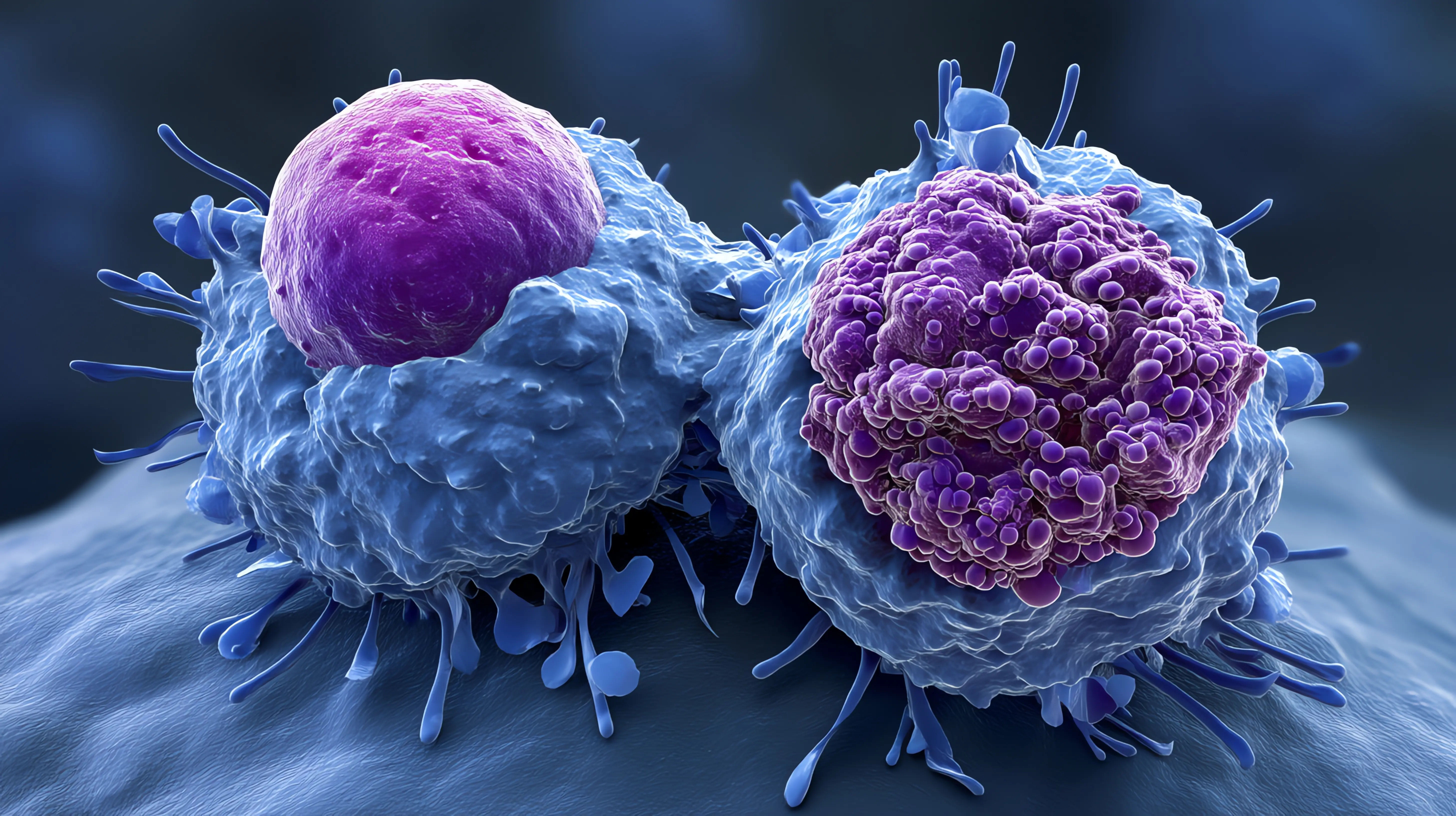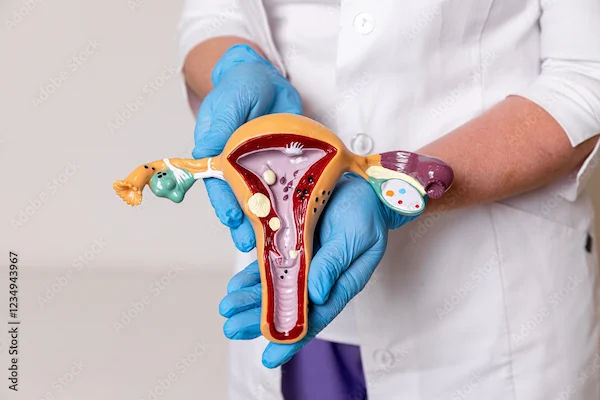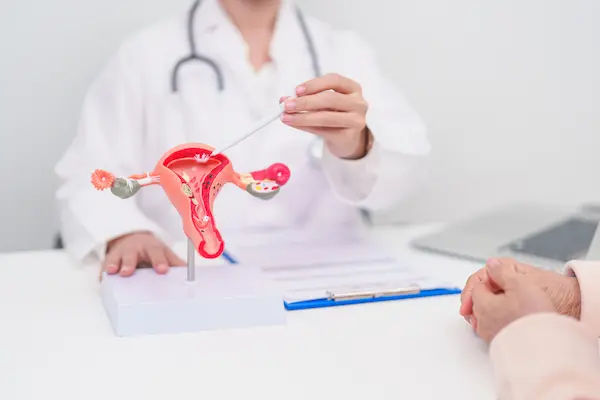Changes In Hair Texture After Hysterectomy
Discover how a hysterectomy can affect hair texture, including common changes like dryness, thinning, or curl pattern shifts, and how to manage them effectively.

Written by Dr.Sonia Bhatt
Last updated on 4th Jul, 2025
.webp?tr=q-80,f-webp,w-350,dpr-2,c-at_max 700w)
Introduction
Undergoing a hysterectomy (surgical removal of the uterus) can bring about several physical and emotional changes. One such change that many women experience is a shift in hair texture. If you’ve noticed your hair becoming thinner, coarser, or more brittle after a hysterectomy, you’re not alone. This article explains why these changes happen, how they affect your health, and what you can do to manage them.
Why Does Hair Texture Change After Hysterectomy?
Hair texture changes after a hysterectomy are primarily linked to hormonal fluctuations. The uterus itself does not produce hormones, but removing it - especially if the ovaries are also removed (oophorectomy) - can lead to a sudden drop in estrogen and progesterone levels. These hormones play a crucial role in maintaining hair health.
Key Hormonal Effects on Hair:
Estrogen helps keep hair in the growth phase longer, leading to thicker, shinier hair.
Progesterone supports hair strength and moisture retention.
Androgens (like testosterone), which may become more dominant post-surgery, can cause hair thinning or coarsening.
Other factors contributing to hair changes include:
Stress from surgery (temporary hair shedding, known as telogen effluvium).
Nutritional deficiencies (iron, vitamin D, or protein).
Thyroid imbalances, which can occur due to hormonal shifts.
Common Hair Changes After Hysterectomy
Women may notice:
Thinning hair: Especially around the temples or crown.
Dryness & brittleness: Hair may lose moisture and break easily.
Coarser or wiry texture: Due to increased androgen influence.
Slower growth: Hair may take longer to grow back after shedding.
These changes are usually temporary, but for some, they may persist if hormone levels remain imbalanced.
How to Manage Hair Texture Changes?
Here are some practical tips to help you manage changes in hair texture and keep your hair looking healthy and well-maintained.
1. Nutritional Support for Healthy Hair
A balanced diet can help restore hair health. Focus on:
Protein-rich foods: Eggs, lean meats, lentils - hair is primarily made of keratin, a protein, so these foods help maintain strength and structure.
Iron & Vitamin B12: Spinach, red meat, fortified cereals - these nutrients support red blood cell production and oxygen delivery to the scalp, helping prevent hair loss.
Omega-3 fatty acids: Flaxseeds, walnuts, fish - nourish the scalp, reduce inflammation, and promote healthy hair growth.
Biotin & Zinc: Nuts, whole grains, eggs - strengthen hair follicles, improve resilience, and reduce breakage.
Consult Top Specialists For More Information
2. Gentle Hair Care Routine
Avoid excessive heat styling (blow dryers, straighteners).
Use sulfate-free shampoos to prevent dryness.
Deep condition weekly to restore moisture.
Massage your scalp to improve blood circulation.
3. Hormone Replacement Therapy (HRT): If Needed
If your ovaries were removed, your doctor may recommend HRT to balance estrogen and progesterone levels, which can help improve hair texture. Always consult a specialist before starting any hormonal treatment.
4. Stress Management
Stress can worsen hair loss. Try:
Yoga or meditation to relax.
Adequate sleep with 7-8 hours per night.
Light exercise, like walking or swimming, to boost circulation.
5. Supplements (If Recommended by a Doctor)
Collagen peptides: Support hair strength.
Vitamin D & Iron supplements: If deficient.
When to See a Doctor?
If hair loss is severe, patchy, or accompanied by other symptoms (fatigue, weight changes), consult a doctor to rule out thyroid issues or other underlying conditions.
Conclusion
Hair texture changes after a hysterectomy are common and often temporary. By nourishing your body, caring for your hair gently, and managing stress, you can support healthy regrowth. If concerns persist, a healthcare provider can guide you with personalised solutions.
If you're experiencing significant hair changes post-hysterectomy, consider booking a consultation with a specialist on Apollo 24|7 for expert advice.
Consult Top Gynaecologists
Consult Top Specialists For More Information

Dr. Mona Yadav
Obstetrician and Gynaecologist
19 Years • MBBS, MD (Obstetrics & Gynaecology)
Dombivli
Nulife multispeciality, Dombivli

Dr. Asha Rani Singh
Obstetrician and Gynaecologist
24 Years • MBBS DGO
Delhi
Dr Asha Rani Singh Clinic, Delhi

Dr. Parul Sharma
Obstetrician and Gynaecologist
8 Years • MBBS, MS (Obstetrics & Gynaecology)
New Delhi
THE DOCTORS NESST, New Delhi
Dr. K Anusha
Obstetrician and Gynaecologist
4 Years • MBBS, DGO
Yemmiganur
SRINIVASAA HOSPITAL, Yemmiganur

Dr. Shyamala Devi
Obstetrician and Gynaecologist
38 Years • MBBS, MS Obstetrics & Gynaecology
Vijayawada
Sri Shivshakti Nilayam, Vijayawada
Consult Top Gynaecologists

Dr. Mona Yadav
Obstetrician and Gynaecologist
19 Years • MBBS, MD (Obstetrics & Gynaecology)
Dombivli
Nulife multispeciality, Dombivli

Dr. Asha Rani Singh
Obstetrician and Gynaecologist
24 Years • MBBS DGO
Delhi
Dr Asha Rani Singh Clinic, Delhi

Dr. Parul Sharma
Obstetrician and Gynaecologist
8 Years • MBBS, MS (Obstetrics & Gynaecology)
New Delhi
THE DOCTORS NESST, New Delhi
Dr. K Anusha
Obstetrician and Gynaecologist
4 Years • MBBS, DGO
Yemmiganur
SRINIVASAA HOSPITAL, Yemmiganur

Dr. Shyamala Devi
Obstetrician and Gynaecologist
38 Years • MBBS, MS Obstetrics & Gynaecology
Vijayawada
Sri Shivshakti Nilayam, Vijayawada




